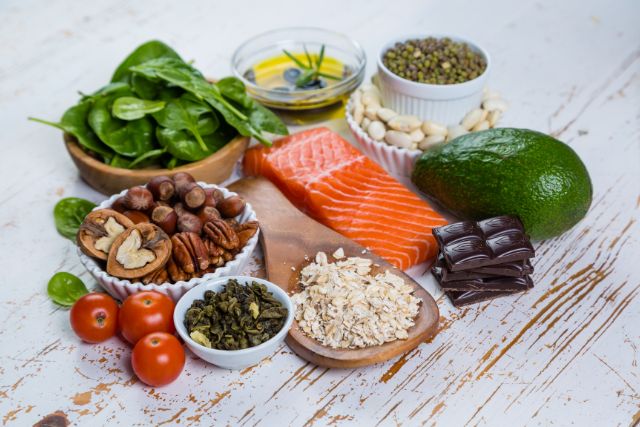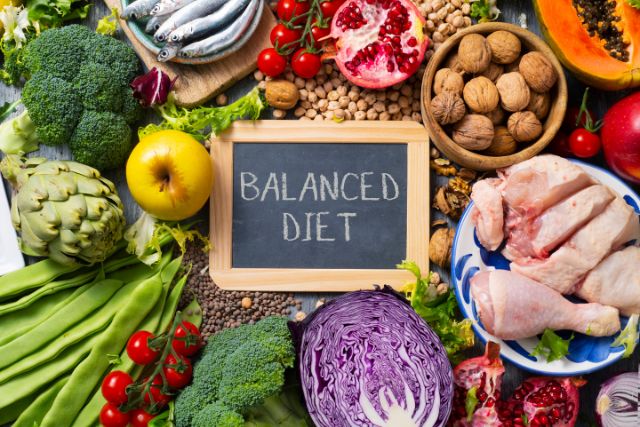Recent Posts
-

- Diabetes-Friendly Nutrition: Smart... 08.12.2024
-

- Nutrition for Chronic... 08.12.2024
-

- Anti-Inflammatory Diet: Food... 08.12.2024
-

- Low-Sodium and Heart-Healthy:... 08.12.2024
-

- Plant-Based Diets for... 08.12.2024
Kidney Power: Supercharge Your Health with Nourishing Kidney-Friendly Foods

Unleash your Kidney Power!
Are you familiar with the location of your kidney throughout your body? The kidneys, which appear like beans, may be found in the upper retroperitoneal area of the belly. They may be found between the smooth peritoneal lining of the upper portion of the abdominal cavity and the posterior body wall. In other words, they are situated posteriorly. As a result, they are located outside the peritoneal cavity in their natural state.
Below the diaphragm, one kidney is located on each side of the spine. The kidneys are paired organs. They are located just under the rib cage. Each one has a tiny but significant cap of endocrine tissue known as the adrenal gland. This gland is responsible for the production of the essential steroid hormones that are found in the body.
So, what exactly do kidneys accomplish for us within our bodies? The kidneys' primary function is to filter waste products out of the blood and then deliver the purified blood back to the rest of the body. After being purified, the blood then travels via the renal veins and back into the rest of the body.
About one million tiny units, known as nephrons, are found in each kidney. Each nephron comprises a glomerulus, a tiny filter, and a tubule linked to the glomerulus. The nephron acts as a filter, removing fluid and waste from the blood as it travels past it. After that, a significant portion of the liquid is returned to circulation, and the waste products are concentrated in any more fluid that is present as urine.
A kidney in good condition may improve its ability to perform. When both kidneys are healthy, each kidney carries out fifty percent of the typical renal function. In the event that one of the kidneys is removed, the remaining kidney may grow to compensate for the loss of function and do up to 75 percent of its typical tasks.
Because the kidneys play an essential role in maintaining healthy blood circulation, it is critical to take care of them by maintaining a healthy diet and getting the proper nutrition, particularly if you are battling a kidney condition. In the following paragraphs, we will examine a few foods currently on the market that benefit kidney health.
Water
To rid the body of harmful pollutants, the kidneys filtrate using water. The human body can only properly function when hydrated with water. Toxins are delivered to the circulation by the cells via the medium of water.
The kidneys then use the water to filter these poisons out and produce the urine that carries them out of the body.
Fatty fish
Any diet may benefit from including salmon, tuna, and other cold-water, fatty fish abundant in omega-3 fatty acids like salmon, tuna, and other cold-water, fatty fish. Because the body cannot produce omega-3 fatty acids, these essential nutrients must be obtained from the food. These heart-healthy fats may be abundant in fatty fish, which are an excellent natural supply.
According to the National Kidney Foundation, omega-3 fats have been shown to have the potential to decrease blood pressure and reduce the amount of fat found in the blood. Finding natural methods to lower blood pressure is vital since having high blood pressure is one of the risk factors for developing kidney disease. Doing so may help protect the kidneys.
Sweet potatoes
Sweet potatoes are comparable to white potatoes, but the higher fiber content of sweet potatoes may allow them to break down more slowly, which results in less of a surge in insulin levels. White potatoes are a good source of carbohydrates. Additionally, sweet potatoes include a variety of vitamins and minerals, including potassium, which may assist in maintaining healthy levels of salt in the body and lessen sodium's impact on the kidneys.
Dark leafy greens
Dark leafy greens, such as spinach, kale, and chard, are dietary mainstays that offer a broad array of vitamins, fibers, and minerals. Chard is another dark leafy green that is included in this category. In addition, many of them have defensive components inside them, such as antioxidants.
On the other hand, these foods often include a significant amount of potassium, meaning that those on a limited diet or those undergoing dialysis should probably avoid eating them.
Berries
Strawberries, blueberries, and raspberries are just a few examples of berries that fall under the "dark berries" category, which are excellent sources of many beneficial nutrients and antioxidant components. These may assist in preventing harm to the cells that are found in the body.
Regarding satiating a desire for something sweet, reaching for berries rather than other sugary meals is likely to provide better results.
Apples
Pectin, an essential dietary fiber, is found in apples, making them a nutritious and delicious snack option. Some risk factors for kidney damage, such as excessive blood sugar and cholesterol levels, may be mitigated by using pectin.
Red bell peppers
Even while red bell peppers are low in potassium and pungent in taste, this is not the only factor that makes them an excellent addition to a diet for renal health. These delicious veggies are a fantastic source of vitamins C and A, as well as vitamin B6, folic acid, and fiber. They also include a good amount of potassium. Red bell peppers benefit your health because they are rich in the antioxidant lycopene. Lycopene has been shown to reduce the risk of developing some malignancies.
Cabbage
Cabbage, a member of the cruciferous vegetable family, is loaded to the gills with phytochemicals, which are chemical substances found in fruits and vegetables that neutralize free radicals before they can cause harm. Numerous phytochemicals are known to help prevent cells from damage that might lead to cancer, and they also promote cardiovascular health. Both of these benefits can be attributed to phytochemicals.
Cabbage is an excellent source of vitamin B6 and folic acid and is rich in vitamins K and C and fiber. Because it has a low potassium content and price, it is an inexpensive addition to the renal diet.
Cauliflower
Cauliflower, like broccoli and other cruciferous vegetables, has a high vitamin C content and is an excellent source of folate and fiber. Additionally, it is loaded with molecules known as indoles, glucosinolates, and thiocyanates, all of which assist the liver in neutralizing harmful substances that have the potential to damage DNA and cell membranes.
Onions
Because it contains sulfur compounds, onion, a member of the genus Allium and is used as a fundamental seasoning in a wide variety of prepared meals, has a strong odor. Onions are a good source of flavonoids, particularly quercetin, a potent antioxidant that may help lower the risk of heart disease and protect against various malignancies. Onions also can make some individuals weep. Onions have a relatively low potassium content and are a rich source of chromium, a mineral that has a role in the metabolism of carbohydrates, fats, and proteins.
Disclaimer: Please note that the material presented in this article is intended only to provide general information. The material in this article was gathered from various sources; nevertheless, we do not claim ownership of any rights associated with the contents and information presented on the site. The original owner retains ownership of any rights.
Sources:
- Where are the Kidneys and Liver Located? (news-medical.net)
- Kidneys - Better Health Channel
- The best foods good for kidneys (medicalnewstoday.com)
- The Renal Diet - 15 Foods That Are Good For Your Kidneys | DaVita





